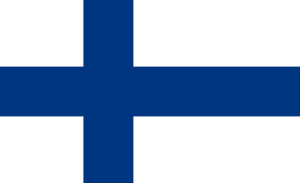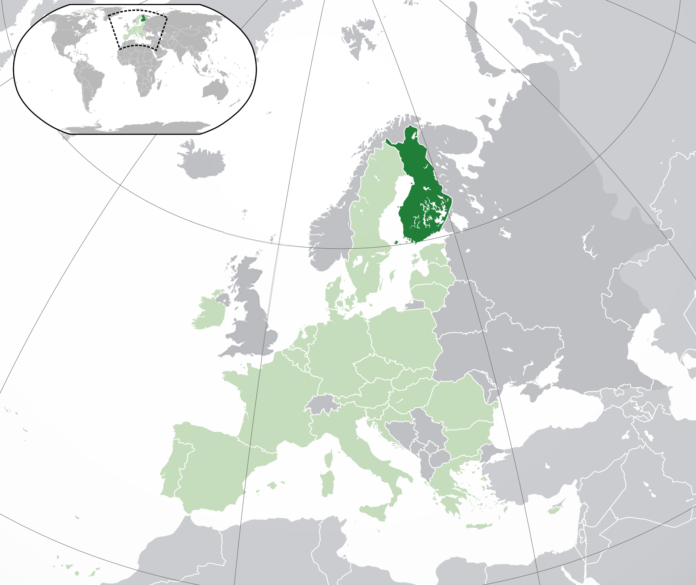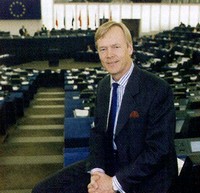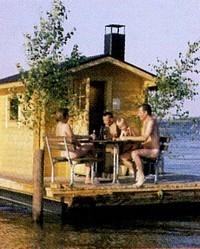Receive our newsletter
Your e-mail address is only used to send you our newsletter and information about the activities of Strasbourg Europe. You can always use the unsubscribe link included in the newsletter.


 The wars launched by Finland’s neighbours in their various attempts to conquer the country only ended in 1809, when Tsar Alexander I finally succeeded in seizing the country, making it a Grand Duchy of the Russian Empire. The Finns had to wait many years before Finland gained its independence.
The wars launched by Finland’s neighbours in their various attempts to conquer the country only ended in 1809, when Tsar Alexander I finally succeeded in seizing the country, making it a Grand Duchy of the Russian Empire. The Finns had to wait many years before Finland gained its independence.
Uspenski Cathedral, Helsinki © Office of the Finnish Tourist Board
 Helsinki was founded in 1550 by the King of Sweden, Gustav Vasa. Surrounded by the sea and many islands, Helsinki is one of the most charming cities in Finland. Ideal for visiting by bus, train, tram or metro, Helsinki is a town which remains very close to nature, with its parks and canals. Helsinki’s landscape is characterised by huge buildings, erected in various architectural styles ranging from neo-classicism to modern architecture, not forgetting art nouveau, national romanticism and functionalism. Built between 1925 and 1931, the parliament building is perhaps the most famous building in Finland. Other sites are also well worth a visit, such as the Senate Square, the Finlandia Hall where concerts and conferences are held, the Finnish National Opera, the Temppeliaukio Church, and the Seurasaari open-air museum. With its 96 kilometres of coastline and its 315 islands, Helsinki is the perfect tourist destination for anyone who enjoys the far north.
Helsinki was founded in 1550 by the King of Sweden, Gustav Vasa. Surrounded by the sea and many islands, Helsinki is one of the most charming cities in Finland. Ideal for visiting by bus, train, tram or metro, Helsinki is a town which remains very close to nature, with its parks and canals. Helsinki’s landscape is characterised by huge buildings, erected in various architectural styles ranging from neo-classicism to modern architecture, not forgetting art nouveau, national romanticism and functionalism. Built between 1925 and 1931, the parliament building is perhaps the most famous building in Finland. Other sites are also well worth a visit, such as the Senate Square, the Finlandia Hall where concerts and conferences are held, the Finnish National Opera, the Temppeliaukio Church, and the Seurasaari open-air museum. With its 96 kilometres of coastline and its 315 islands, Helsinki is the perfect tourist destination for anyone who enjoys the far north.
© Office of the Finnish Tourist Board
 Born in 1952 in Tuupovaara, Ari Vatanen is a living legend in the international motor sports arena, and one of the most highly decorated racers in the world. He began competitive racing in 1971 at the age of 19 and took many international prizes. As a rally world champion in 1981, and a long distance rally champion in 1997, he also won the famous Paris-Dakar rally four times. Elected as a Member of the European Parliament in 1999, Ari Vatanen has taken a break from the racetrack to devote himself fully to politics and to his new European role. In June 2004, he was re-elected as a member of the European Parliament, but this time as part of a list of candidates for a constituency in southeastern France. Along with Daniel Cohn-Bendit, he is one of the few MEPs to have obtained a European mandate in two different countries. Despite these new functions, he continues to participate in competition racing, such as the Chamonix 24 Hours on Ice or the Paris-Dakar, in which he achieved a respectable 7th place in 2003.
Born in 1952 in Tuupovaara, Ari Vatanen is a living legend in the international motor sports arena, and one of the most highly decorated racers in the world. He began competitive racing in 1971 at the age of 19 and took many international prizes. As a rally world champion in 1981, and a long distance rally champion in 1997, he also won the famous Paris-Dakar rally four times. Elected as a Member of the European Parliament in 1999, Ari Vatanen has taken a break from the racetrack to devote himself fully to politics and to his new European role. In June 2004, he was re-elected as a member of the European Parliament, but this time as part of a list of candidates for a constituency in southeastern France. Along with Daniel Cohn-Bendit, he is one of the few MEPs to have obtained a European mandate in two different countries. Despite these new functions, he continues to participate in competition racing, such as the Chamonix 24 Hours on Ice or the Paris-Dakar, in which he achieved a respectable 7th place in 2003.
Ari Vatanen, Member of the European Parliament © European Parliament
 In Finland, the sauna is a national institution! There are more than 1.7 million saunas throughout the country. Invented by the Finns more than 2,000 years ago, saunas are today part of day-to-day life in Finland. The traditional sauna is made out of wood and comprises a small room equipped with rows of slatted seating at various heights and a stove on which large stones are heated. A sauna session involves throwing water on the hot stones in order to generate steam and to raise the temperature. The heat generated in this way relaxes your muscles and the sweating, brought about by rubbing birch twigs on the skin, opens your pores and cleans your body profoundly throughout. On the last row, the temperature can reach 90°. After a short time spent in this extreme heat, it is time to leave the room, and to freshen up in the nearby lake at about 3°. For the Finns, sauna sessions are a moment of fun and conviviality, and the perfect place to relax and recover from all the stresses of daily life.
In Finland, the sauna is a national institution! There are more than 1.7 million saunas throughout the country. Invented by the Finns more than 2,000 years ago, saunas are today part of day-to-day life in Finland. The traditional sauna is made out of wood and comprises a small room equipped with rows of slatted seating at various heights and a stove on which large stones are heated. A sauna session involves throwing water on the hot stones in order to generate steam and to raise the temperature. The heat generated in this way relaxes your muscles and the sweating, brought about by rubbing birch twigs on the skin, opens your pores and cleans your body profoundly throughout. On the last row, the temperature can reach 90°. After a short time spent in this extreme heat, it is time to leave the room, and to freshen up in the nearby lake at about 3°. For the Finns, sauna sessions are a moment of fun and conviviality, and the perfect place to relax and recover from all the stresses of daily life.
© Office of the Finnish Tourist Board
 Father Christmas
Father ChristmasYour e-mail address is only used to send you our newsletter and information about the activities of Strasbourg Europe. You can always use the unsubscribe link included in the newsletter.
Information Center
on the European Institutions (CIIE)
Europe Direct Information Center
All rights reserved to the CIIE
Non-profit organization
Mailing address
1 allée Kastner
67000 Strasbourg
France
Visitors entrance
8 rue Boecklin
67000 Strasbourg
France
To provide the best experiences, we use technologies such as cookies to store and/or access device information. Consenting to these technologies will allow us to process data such as browsing behavior or unique IDs on this site. Failure to consent or withdrawing consent may adversely affect certain features and functions.
Europe Direct network
The CIIE team
Contact information and opening hours
Lieu d’Europe
The CIIE offices
Contact us
CIIE’s Documentation Centre & Publications
School presentations & Activities
Borrowing of learning material
Activities for the general public
Institutions of the European Union in Strasbourg
Institutions Under the Authority of the Council of Europe
Other European Organisations in Strasbourg
Sessions of the European institutions in Strasbourg
Visiting the institutions
Map of the European district of Strasbourg
Institutions in Strasbourg in photos
Discover artistic Europe
National holidays of the member states of the Council of Europe